From Friends Academy to Broadway to the North Pole
12-18-25
Subscribe
Close
Fill out the form below to receive updates on the latest and greatest within the Friends Academy community.
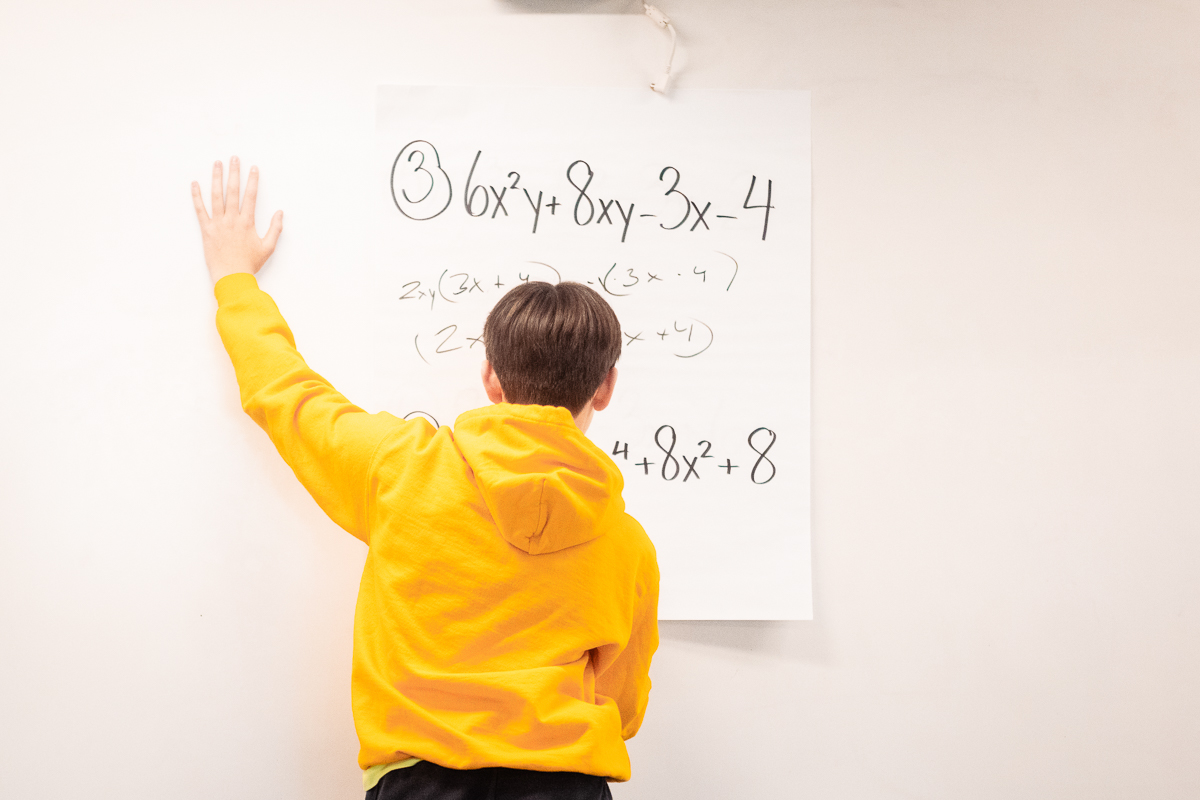
In Lara Klein’s 8th Grade Algebra class, three teams stand at the ready as they face the front of their classroom. A series of mathematical equations grace large paper posters, as the students, markers in hand, wait for Ms. Klein’s call to action. “Get ready… on your mark… go!” she calls out. “Remember to talk with your team!”
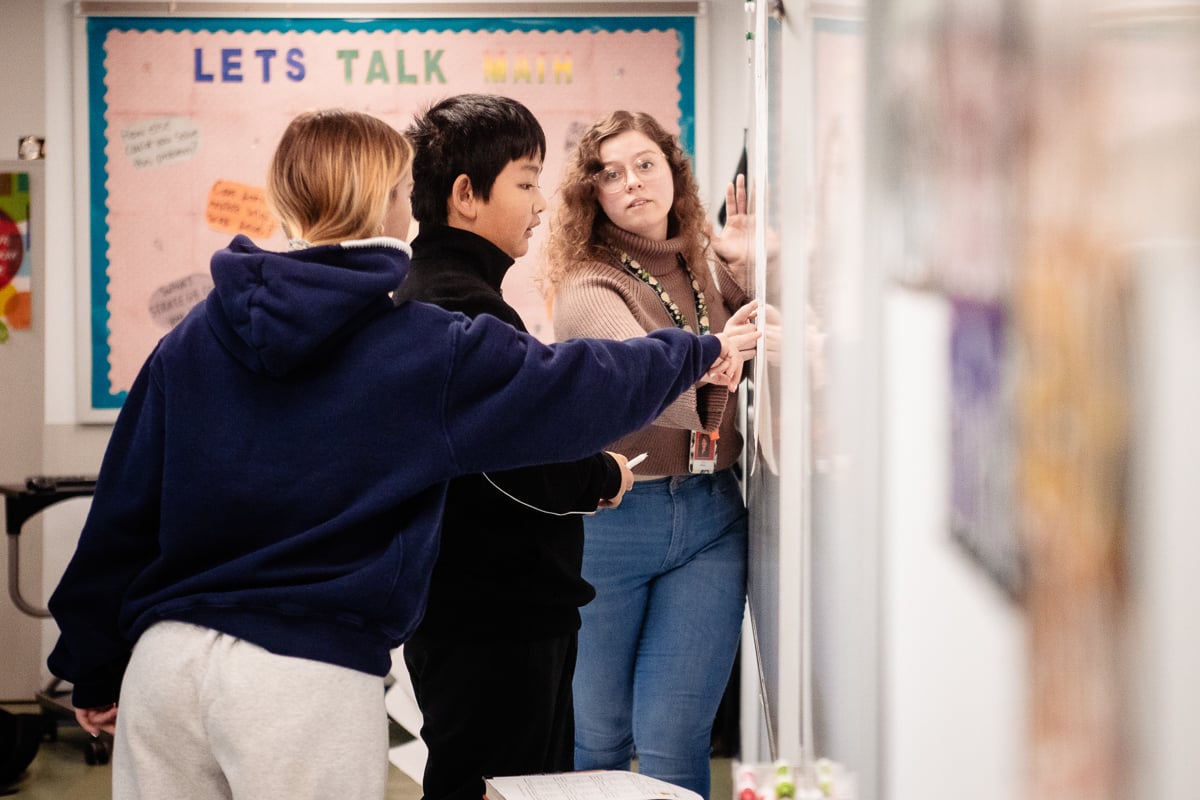
Within seconds, a representative from each team springs to the board as their teammates call out encouragement and directions in today’s “Factoring Relays.”
“We are trying to find the greatest common factor by applying different strategies, like writing the first two terms in parentheses,” explained 8th grader Apexa Holmes. “The most challenging thing is trying to figure out if the GCF (greatest common factor) is going to be positive or negative,” added Dylan Keefer from a competing team. “Everything has to work out and it can be hard to get the right answer.”
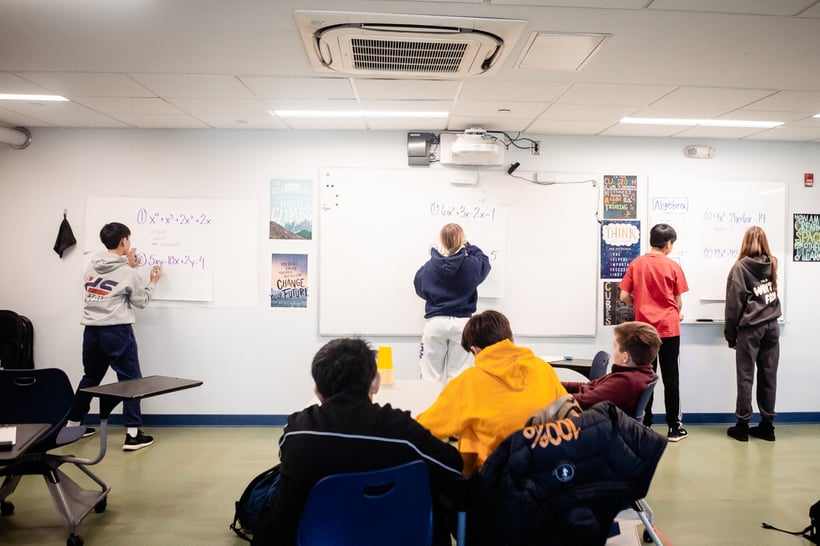
As each team completes a problem, they are given the go-ahead by Ms. Klein to return to their team and finish the turn by stacking a set of either yellow, blue, or purple cups in an ascending pyramid and then quickly unstacking them. “Where do you find the first GCF?” calls out Ms. Klein. “Nice! Where do you find the second GCF?... In the second two terms. Remember to work together with your team,” she reminds her students.
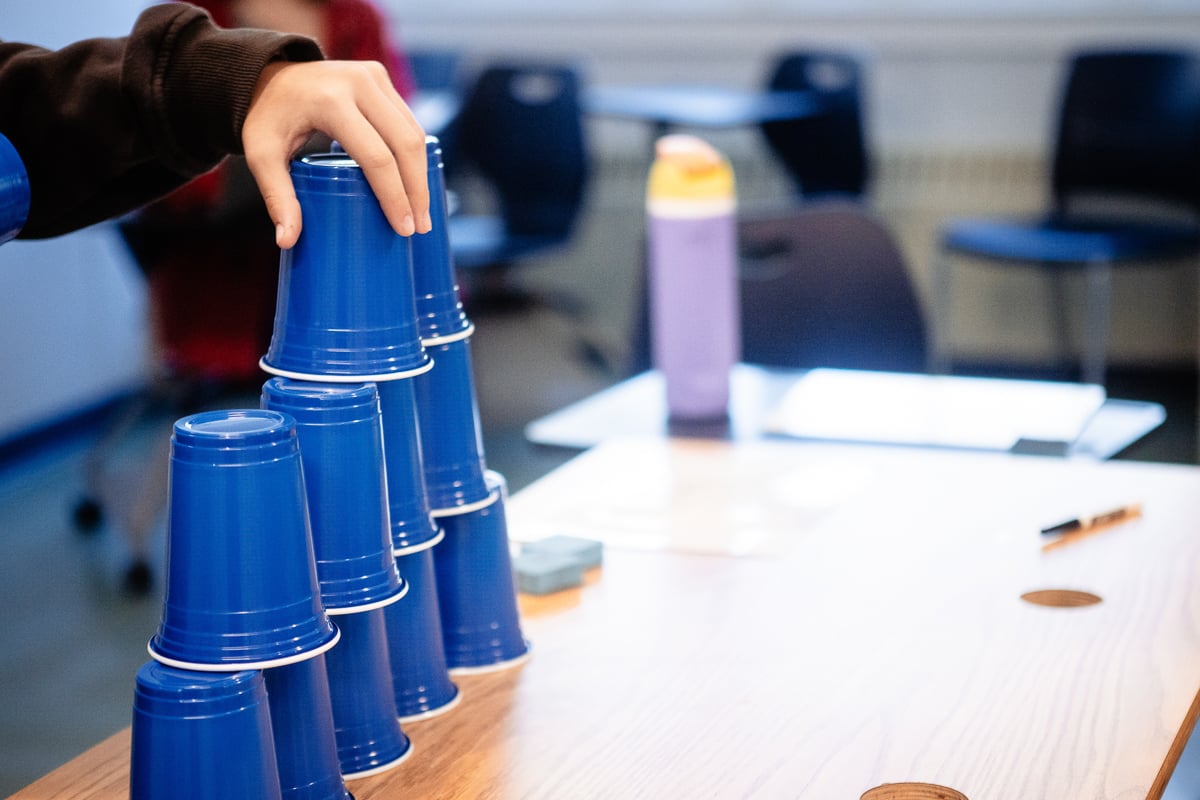
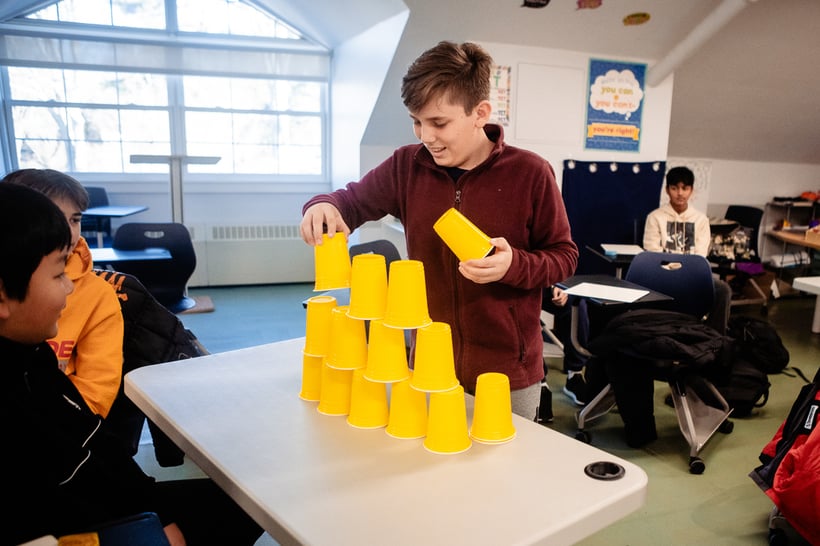
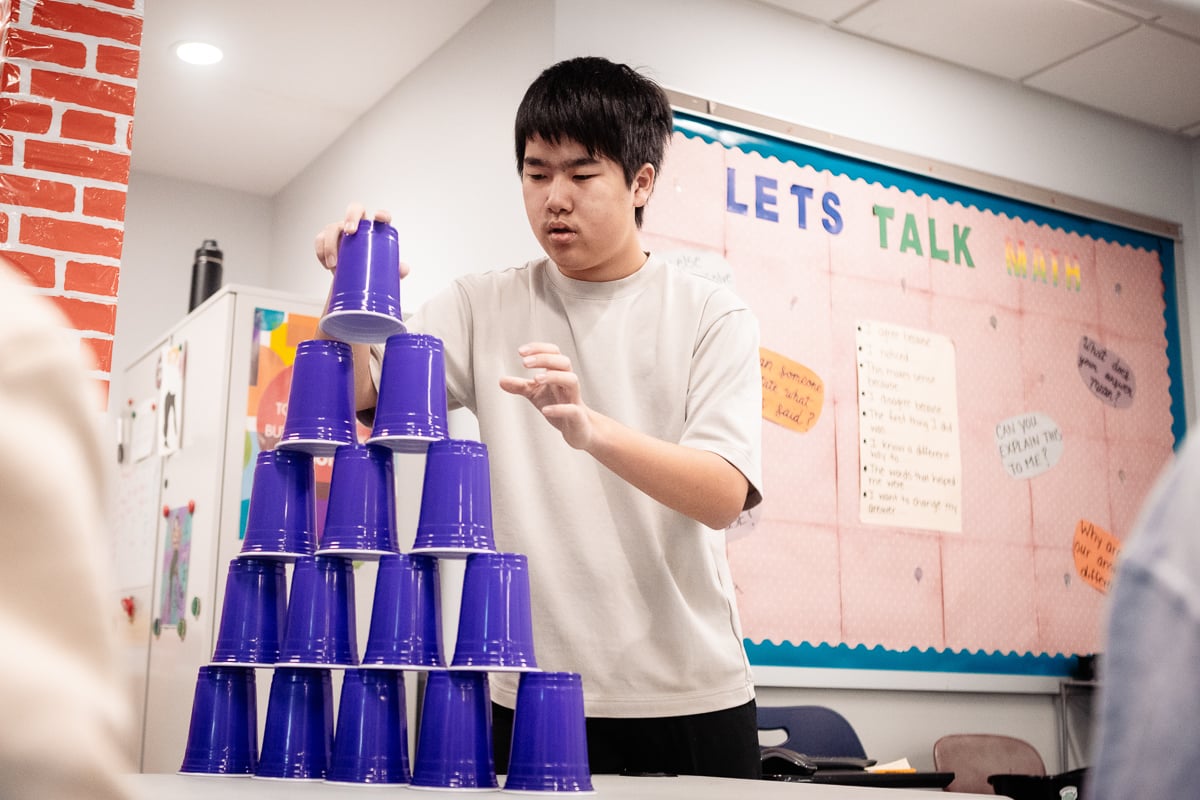
With each round, the problems grow successively harder and the students’ rate of thinking accelerates. “I feel like this is more fast paced and you think about it more frequently than if you were doing it on the paper,” observed Dylan. “You can’t slow down to talk and keep your mind on the math problem,” he pointed out. “It’s definitely a more fun way of practicing,” agreed Apexa.
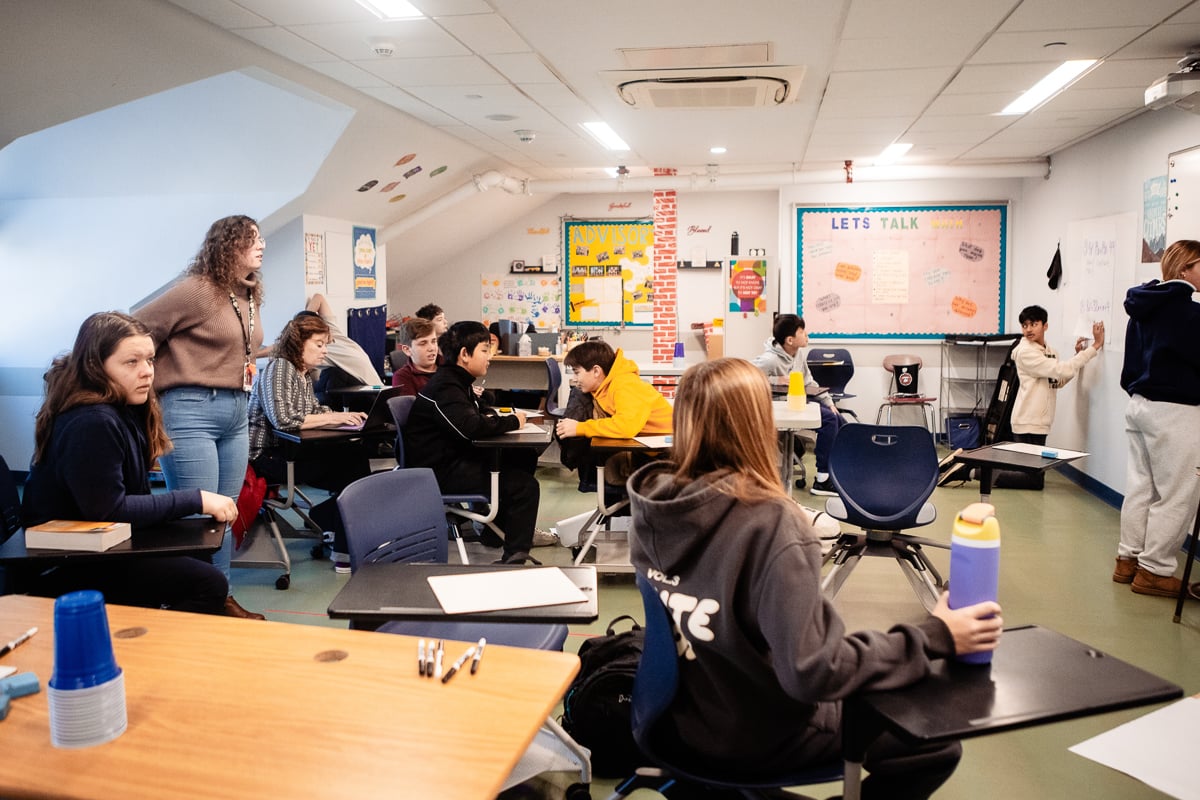
Watching her students intently as they apply speed and collaboration, Ms. Klein underscored the importance of movement-based lessons. “The benefit of this kind of activity is that it keeps the kids engaged because it helps them physically and mentally,” she said. “I’ll do activities like this as practice frequently,” she shared. “It’s a way of involving games in algebraic computations.”
Later in the semester, Ms. Klein plans to use a combination of video and game-playing as a way to understand parabolas. “When we get to our unit on quadratics, the students will play a series of games that involve throwing and catching, which I’ll document in slow motion on video,” she described. “Watching the video, they’ll be able to graph and determine the parabolic computations.”
Movement is not the only thing Ms. Klein embeds in her lessons. “Practicing the skill of collaboration means that the team has to work together to make sure their work on the board is correct,” she explained. “It’s about being able to explain your reasoning at the board so that someone else can see your strategy, which helps them all to strategize more.”
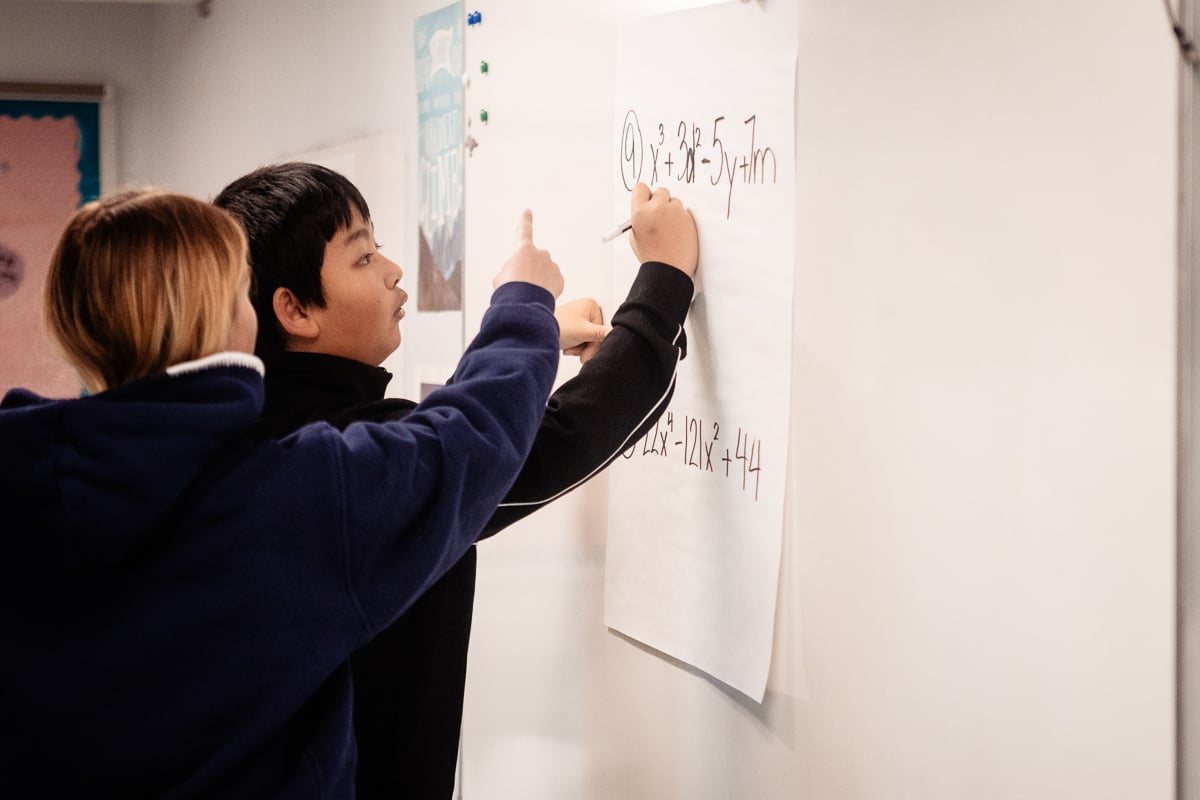
This concept is not lost on her students, as Rohan Basra describes their team’s strategy. “If he’s stuck, we have to guide him while he’s doing the problem,” he said. “He’s writing down our thinking on the board…” he added before quickly catching Ms. Klein’s attention. “It’s 2x + 4, Ms. Klein!”
Photography by Alvin Caal/Friends Academy
Did you enjoy this post? Here are a few more we think you'd be interested in:
Fill out the form below to receive updates on the latest and greatest within the Friends Academy community.